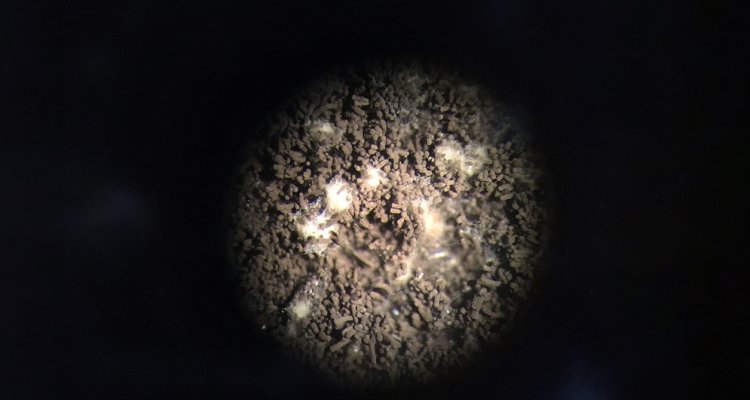
News
Notorious fungus Aspergillus fumigatus completely scrambles its genome after just one bout of sex
Researchers at Wageningen University & Research (WUR) have found that Aspergillus fumigatus produces more meiotic crossovers than any other organism. This means that the fungus can establish its complex resistance mechanism after just one cycle of sexual reproduction. The discovery uncovers a possible cause of the rapid spread of hard-to-treat fungal infections.
It also makes it difficult to identify the source of an infection with a resistant fungus. The groundbreaking findings of the WUR study have been published in an article in PLoS Biology, co-authored by scientists from Imperial College London and University of Nottingham.
Aspergillus fumigatus is naturally widespread in our environment. In fact, we inhale the spores of this fungus every day. For healthy people, this causes no problems. But it can be dangerous for seriously ill patients, says Eveline Snelders, assistant professor at the Laboratory of Genetics. “For example, it’s risky for people who are in the ICU, or receiving chemotherapy, or those who have undergone an organ transplant. Infections caused by Aspergillus fumigatus are therefore treated medically with azoles, which are antifungal agents. The problem is that the fungus is increasingly resistant to this treatment, and this can be fatal to patients.”
Hotspots for the emergence of resistance
One of the causes of the resistance mechanism in the fungus is believed
to be the frequent use of azoles in agriculture, says Snelders. “Farmers and
horticulturists may not use azoles specifically to combat Aspergillus fumigatus,
but they do use them to tackle other fungi. Exposure to azoles has enabled Aspergillus fumigatus to develop a resistance mechanism. Compost heaps, where the fungus naturally thrives, are particular hotspots for resistance selection. And
that eventually works its way into hospitals. Even patients who have never been
treated with an azole can already be carrying an azole-resistant fungus.”
Difficulty tracing orgins
According to Snelders, when a patient is infected with an azole-resistant
Aspergillus fumigatus the difficulty is trying to find out the precise origins of the fungus. “As part of a new study we’re looking at infected patients in two different hospitals in the Netherlands and the presence of the fungus on a farm in the province of North Holland. Logically, you would expect the isolates [the fungal colony] at the nearby hospital to be genetically much more closely related to those at the farm in North Holland. It’s located much closer, after all. But that appears not to be the case.”
Highest ever number of crossovers
At each of the two hospitals there are isolates that have many genetic differences to those of the fungus at the farm, but also many similarities. This may be due to the sexual reproduction of the fungus, which Snelders and her fellow researchers looked at in the study being published in PLoS Biology. “For that we focused on the number of crossovers per chromosome. In humans, that would be three to four on average. This results in combinations of genes from either parent remaining strongly linked. But in Aspergillus fumigatus, we detected up to 30 crossovers. That’s the highest number ever found in an organism.”
Complete reshuffle after a single act of reproduction
This means that a single act of sexual reproduction leads to a ‘complete reshuffling’ of the genome – the genetic makeup of the organism. “This causes enormous variation in the population, even within a relatively limited environment,” says Snelders. “It makes it very difficult to identify the transmission
route of an infection, from the environment to a patient. The fungus can also
efficiently reproduce asexually as well as sexually. So you could simultaneously find the fungus with identical genomes in isolates located thousands of kilometres apart. That makes it very challenging to figure out the transmission of this fungus.”
Union of two mutations
The findings have revealed to the researchers more about the origin and efficient spread of the resistance mechanism consisting of two mutations in the same gene, says Snelders. “We always thought that sex could not play an important part in this, because in regular meiosis [cell division] those two resistance mutations cannot be brought together. That’s because the mutations of the gene on a chromosome are very close together. But we now know that an organism – in this case Aspergillus fumigatus – can in fact pass on this resistance mechanism within a single act of sexual reproduction, thanks to the high number of crossovers.”
Citizen science project on Dutch spread
This autumn, WUR researchers will attempt to improve our understanding of how the fungus is spread by launching a citizen science project: Schimmelradar, or Fungus Radar. “With the help of the general public, we will spend a month taking samples of the fungus all over the Netherlands using plastic insect traps,” says Snelders. “These contain an adhesive strip which the fungus sticks to. Participants will return the strips to us, and then we’ll cultivate the fungus in our lab. This will allow us to see if there are areas where Aspergillus fumigatus is more or less common and what percentage of the fungus has the resistance mechanism.”